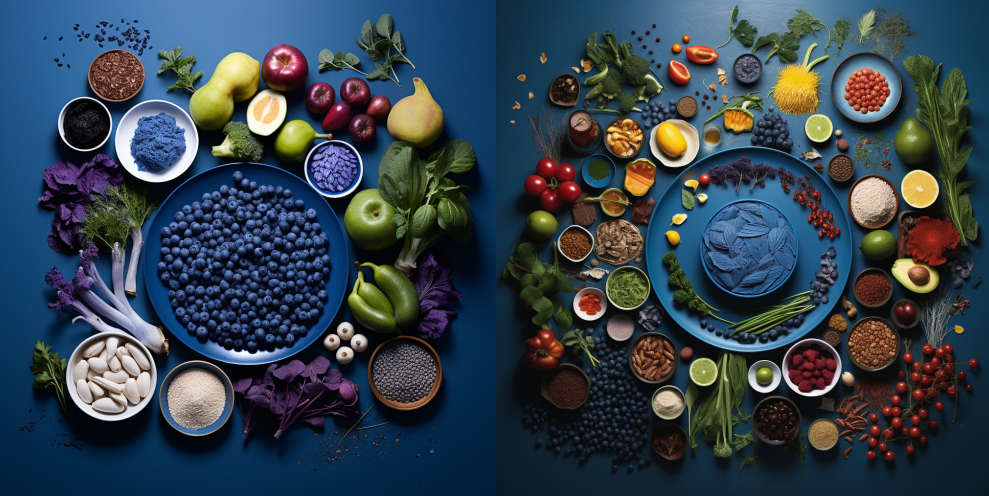As the world increasingly recognises the benefits of a diet inspired by Blue Zones, there's a growing anticipation that these dietary insights will influence upcoming food trends. The nutritional richness and health benefits found in the staple ingredients of Blue Zones may well become a significant part of future culinary innovations.
Blue Zones, regions globally recognised for longevity and well-being, offer insights into lifestyle, diet and community practices that contribute to a longer, healthier life. One of the key factors contributing to the vitality of these zones is their diet.
What Defines a Blue Zone?
Blue Zones, identified by researcher Dan Buettner, encompass five regions worldwide: Ikaria in Greece, Okinawa in Japan, Sardinia in Italy, Nicoya in Costa Rica, and Loma Linda in California, USA. These areas share lifestyle and dietary patterns that contribute to a disproportionately high number of centenarians and overall well-being.
The Blue Zones Diet: Key Components
The diets in Blue Zones are primarily plant-based, rich in fruits, vegetables, legumes and whole grains. These regions embrace a primarily vegetarian or pescatarian lifestyle, with limited consumption of meat. The diet is low in processed foods, focusing on local, seasonal and minimally processed ingredients.
Potential Trends Incorporating Blue Zone Ingredients
Innovative Plant-Based Menus
One of the most apparent influences could be the further proliferation of plant-based menus. With the spotlight on legumes, whole grains and an abundance of vegetables, we can expect to see a surge in innovative plant-based dishes that mimic the healthful elements of Blue Zone diets. Chefs might experiment with various global cuisines to create plant-centric options that are both nutritious and flavourful.
Rise of Nutrient-Dense Bowls
Bowls filled with nutrient-dense ingredients could become a mainstream trend. Inspired by Blue Zone staples such as sweet potatoes, tofu and a variety of colourful vegetables, these bowls might offer a medley of healthful nutrients, antioxidants and essential minerals, providing a convenient and nourishing meal option for health-conscious diners.
Local and Seasonal Emphasis
The emphasis on locally sourced and seasonal ingredients, a fundamental aspect of Blue Zone diets, might further inspire restaurants to prioritise their menus based on the freshest, locally available produce. Menus could pivot towards greater transparency, showcasing the origin of ingredients and the health benefits associated with consuming seasonal, locally sourced foods.
Revival of Traditional Whole Grains
Whole grains such as barley, farro and sourdough bread, prevalent in the diets of Blue Zone inhabitants, might witness a resurgence. The rediscovery and celebration of these ancient grains could lead to the creation of innovative dishes that highlight their nutritional value and unique taste profiles, catering to a growing interest in diverse, nutrient-packed grains.
Promotion of Balanced Dining
Restaurants might begin to advocate for a more balanced approach to dining, much like the dietary habits observed in Blue Zones. Menus could showcase the importance of consuming a variety of fruits, vegetables and legumes to support overall health and vitality, aiming to create a dining experience that nurtures not just appetite but well-being.
Distinctive Dietary Patterns in Blue Zones
Ikaria, Greece
-
Key Foods: Ikaria, known for its high number of centenarians, thrives on a traditional Mediterranean diet. Staples include olive oil, vegetables like tomatoes, greens and potatoes, whole grains such as barley and farro, as well as legumes like chickpeas and lentils.
-
Dietary Habits: Their diet primarily features plant-based foods, fish and occasional dairy, while red meat is consumed sparingly.
Okinawa, Japan
-
Key Foods: The Okinawan diet comprises sweet potatoes, tofu, seaweed, bitter melon and various vegetables like cabbage, carrots and radishes. Green tea is a significant part of their routine.
-
Dietary Habits: They have a predominantly plant-based diet, low in meat and high in antioxidants from locally grown produce.
Sardinia, Italy
-
Key Foods: Sardinians enjoy a diet rich in whole grains like barley and sourdough bread, as well as vegetables such as fava beans, tomatoes, and artichokes. Olive oil is a central component of their cuisine.
-
Dietary Habits: Their diet revolves around plant-based foods, cheese, and moderate consumption of meat, mainly lamb and pork.
Nicoya, Costa Rica
-
Key Foods: The Nicoyan diet includes beans, squash, corn, papaya, and a variety of fruits and vegetables, along with maize-based tortillas.
-
Dietary Habits: Their diet primarily consists of plant-based foods, a moderate amount of dairy, and very limited red meat.
Loma Linda, California, USA
-
Key Foods: Loma Linda residents typically follow a vegetarian diet, centring around legumes, nuts, seeds, whole grains, and a variety of fruits and vegetables.
-
Dietary Habits: They follow a vegetarian or pescatarian lifestyle, with a focus on plant-based foods and very limited animal products.
Sonder Capital Limited, headquartered in London, is your strategic partner in the hospitality, leisure, retail, consumer and luxury goods sectors. With a commitment to excellence and innovation, we offer customised business strategies, comprehensive financial advisory services and harness cutting-edge technology to empower your success. Partner with us to unlock your business's full potential.

